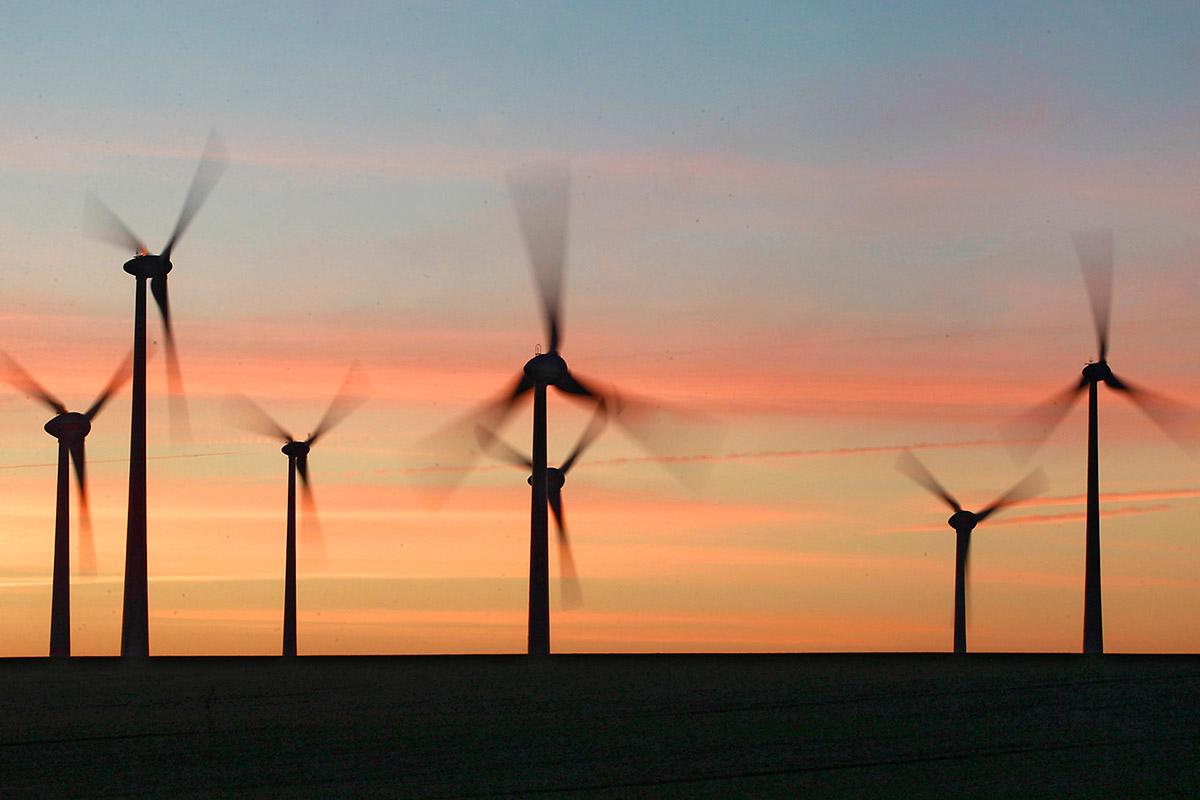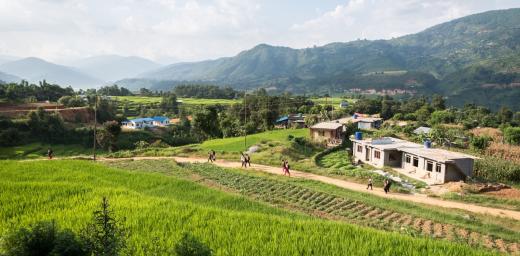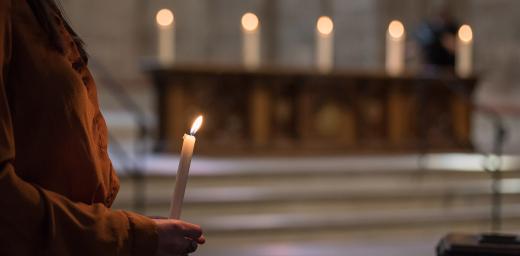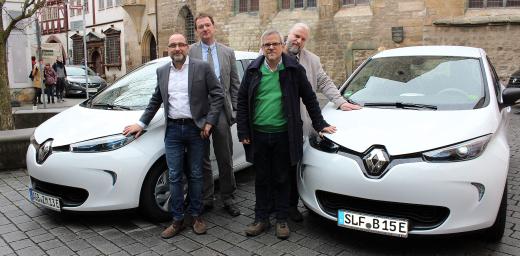Church’s power needs covered by self-produced wind energy

Wind turbines generate the green power needed by the parishes and church administration of the EKM, Germany. Photo: epd-bild/Steffen Schellhorn
Evangelical Church in Central Germany wind turbines set to cover all parishes and diakonia institutions
(LWI) – The Evangelical Church in Central Germany (EKM) has an ambitious goal: it wants to generate the electricity it consumes in its parishes and diaconal institutions itself and protect the climate by doing so.
"Here it is," says Thomas Wicks, Head of the Agriculture Section at the EKM. On the map he points to the small town of Olbersleben in the middle of Thuringia province, eastern Germany. The seventh wind turbine of the church went into operation here at the end of June. It was made possible financially by the church's own investments and government funding under Germany’s Renewable Energy Sources Act.
However, the church is not primarily concerned with returns on investment, but with a climate-political goal: the annual energy consumption of the parishes and church administrations is to be covered by self-produced wind energy that is fed into the power grid. This energy demand amounts to 33 million kilowatt hours per year and takes seven wind turbines to generate. This objective has been achieved.
However, if the diaconal institutions of the church are added, the power requirement increases to 57 million kilowatt hours. This corresponds to the annual electricity consumption of around 14,000 four-person households in Germany. To cover this, additional wind turbines must be installed, totalling 13 to 16 in the end. The EKM strives to reach this goal by the end of this year.
Synod decision to “produce the power we consume”
The fact that the EKM has embarked on the production of electricity is a consequence of the campaign "Changing Climate – Changing Lifestyle" with which EKM in 2011 addressed issues of climate protection in numerous lectures, discussions and training events. "Our synod also dealt with the topic and asked what we, as a church and on a larger scale, could do for climate protection," explains Friedemann Kahl, EKM press spokesperson. In the synod the idea was born to produce the power we consume by wind turbines. The main reason for this is that the EKM owns a lot of land that it had already leased to wind farm operators before 2011. Around 130 wind turbines from other investors run on EKM land.
Our synod dealt with the topic and asked what we, as a church and on a larger scale, could do for climate protection.
It was a logical step for the EKM to enter the business as an operator itself, even if wind farms have been a controversial issue. While some argue primarily against the "mutilation of the landscape", others point to possible dangers for humans and animals: birds die when hit by rotors, people feel impaired by sound and light emissions as well as the moving shadows of the rotors. That's why it's important to check the locations carefully and talk to the local residents and parishes, says Wick. So far, however, there have been no major conflicts. On the contrary, the experiences have been very positive.
This encourages the EKM to think one step further. So far, the electricity produced is only fed into the power grid; in future EKM intends to market it itself via an external service provider.
Beyond a church’s core business
But is all this justified, critical voices have been asking. Should a church not take care of its social and pastoral tasks rather than produce and sell electricity? "It is quite clear that our core business is a different one," says Kahl. "But we are making good use of a resource we have as a church – our land." Even 200 years ago the EKM leased church property to others to finance church work in the parishes and diaconal institutions with the proceeds. "The construction and operation of wind turbines is one way of ‘going with the times’ in its best sense."
This text is based on an article by Stephan Kosch in "Zeitzeichen" 7/2018. Editing and translation: LWF Office for Communication Services.





